Partnerships, Data, and AI: A Crossbeam’s 2025 Playbook for Revenue Teams
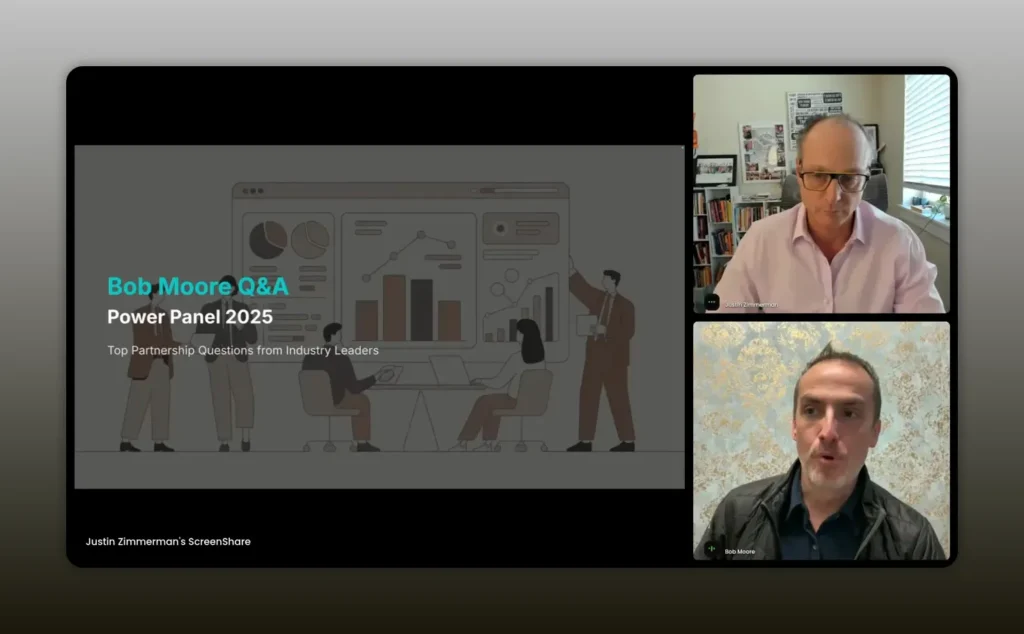
Featuring expert advice from Justin Zimmerman and Bob Moore.
Introduction
Change is arriving faster than planning cycles. New AI capabilities are accelerating how teams think about process, but the smartest moves are not always about the flashiest tech. The real win lies in combining disciplined workflows, clear data strategies, and partnership orchestration so you can create predictable, repeatable revenue outcomes.
Across the conversation between Justin Zimmerman and Bob Moore, two themes stand out: treat AI and automation as enablers for better workflows, and treat partner data as a proprietary asset. This article synthesizes that guidance into a practical, tactical roadmap you can apply whether you’re a head of partnerships, a CRO, a RevOps leader, or a channel manager.
This is the fastest things have been moving and the most net innovation that I’ve witnessed in my entire career. – Bob Moore
Table of Contents
- Why this moment matters
- Agentic AI: crawl, walk, run
- Human-in-the-loop: the immediate era
- Second-party data: the engine for partner-driven pipeline
- How to use partner data to generate pipeline
- Service partners and channel strategy
- Playbook: tactical steps to get started
- Measuring success: KPIs that matter
- Common pitfalls and how to avoid them
- FAQs
- Conclusion
Why this moment matters
Markets move faster than ever. Justin Zimmerman framed this era as one where AI is more than a technology trend — it’s a shift in mindset. When the cost of experimentation drops and new tools make previously expensive tasks feasible, organizations start to question “the way we’ve always done it.” That questioning is where durable advantage is won.
Two practical consequences of this moment:
- Organizations that codify repeatable workflows will scale much faster when automation is added.
- Data that lives at the intersection of you and your partners becomes a competitive moat — but only if you treat it as an operational asset, not a one-off report.
Justin’s point is simple but potent: AI acts as an accelerant to an innovation mindset. That mindset produces better workflows, and better workflows unlock more value from partners and data.
Agentic AI: crawl, walk, run
Bob Moore offers a grounded forecast on “agentic” AI — the class of systems people often imagine as fully autonomous, always-on decision makers. His perspective is sober and surprisingly optimistic because it prioritizes what to build now versus later.
Key takeaways from Bob’s view:
- Agentic in the colloquial sense (autonomous, self-directed systems) is a long-term horizon. It’s tempting to chase it, but it comes with high operational and safety costs.
- Short- to medium-term value lives in atomic, transactional agents — call-and-response systems that perform well-scoped jobs (generate an email, answer a customer question, assemble a report) with human oversight.
- Prioritize incremental automation of well-defined jobs to extract leverage without ceding control.

“For the foreseeable future, we’re going to live in this realm where agentic doesn’t go off on its own for all that long.” – Bob Moore
Bob’s recommended approach is crawl → walk → run. Start by replacing predictable, repetitive tasks with LLM-backed automations that have clear inputs, outputs, and guardrails. As those systems demonstrate reliability and business impact, broaden the scope of problems you give to AI. The “run” phase — fully autonomous agents making high-stakes decisions — is both technically and organizationally heavier, and it should be approached only after repeated validation of smaller automations.
Human-in-the-loop: the immediate era
One of the strongest practical points Bob makes is that most valuable AI implementations will remain human-in-the-loop for a long time.
Why this matters:
- Human oversight prevents drift and keeps outputs aligned with customer or regulatory expectations.
- Teams preserve accountability while still leveraging AI to reduce manual labor and speed up processes.
- Organizations can iterate faster: human review surfaces model weaknesses, producing better prompts, templates, and operational rules.
These AI powered processes are almost exclusively still human in the loop. – Bob Moore
Pragmatically, adopt this mental model: treat AI as an assistant, not a replacement. Design flows where AI proposes, humans validate, and the system learns. Examples include automated email drafting with a one-click approve option, or answer retrieval systems that attach supporting sources for a human reviewer to confirm before publishing.
Second-party data: the engine for partner-driven pipeline
One of the single most actionable ideas in the discussion is the concept of second-party data — the information you get directly from partners about shared accounts. Bob explains how second-party data transforms pipeline generation by providing context and momentum signals that neither first-party nor third-party datasets can reliably surface.
To understand the data landscape, categorize data into three buckets:
- Third-party data: public, purchased attributes (revenue, size, industry).
- First-party data: behavioral signals you collect (website visits, product usage).
- Second-party data: partner-shared CRM or opportunity-level signals that reveal where buying momentum exists in the broader ecosystem.
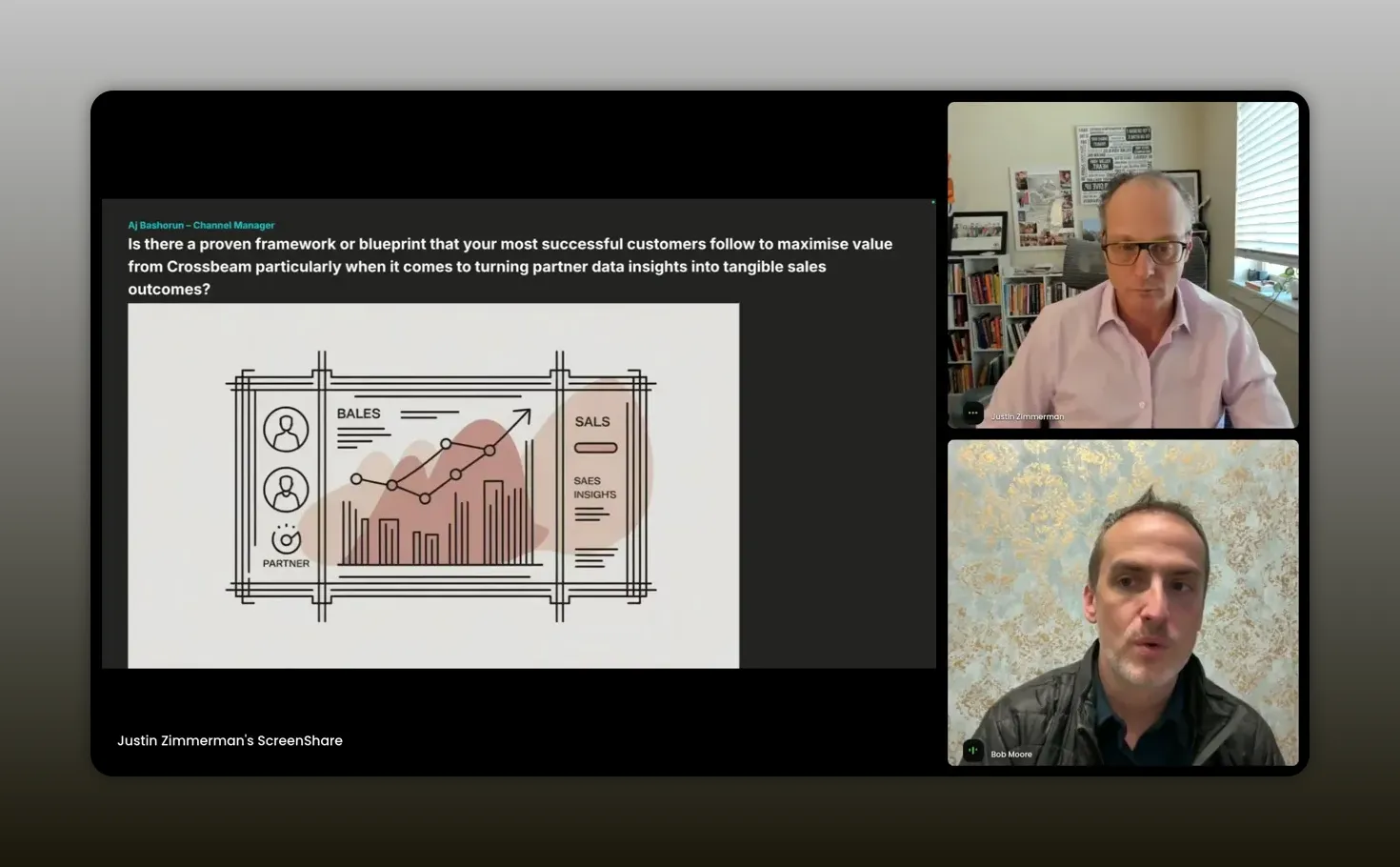
At our core, we are basically a large-scale automated account mapping platform. – Bob Moore
Second-party data acts like a metal detector over your CRM haystack. It shows you accounts that have engagement with your ecosystem — accounts that are more likely to convert, expand, or re-activate. When used consistently, second-party data becomes a proprietary asset: your partners’ collective signals are unique to your company and cannot be replicated by buying a public data feed.
How to use partner data to generate pipeline
Bob lays out a practical use case every revenue team can apply immediately: use partner-provided signals to prioritize accounts for outreach and to accelerate deals in the pipeline.
High-impact tactics validated by customers:
- Build an “Ecosystem Qualified Lead” (EQL) program. Create a rule set that flags prospects when a partner records a meaningful event (new opportunity, renewal, product purchase). Treat EQLs like MQLs but with higher intent.
- Enrich SDR playbooks with partner context. Provide scripts and talking points that reference the partner’s activity — not only does this improve response rates, it creates credibility and relevance.
- Use second-party signals to power ABM spending. Shift ad dollars and ABM resources toward accounts where partner momentum is rising; conversion rates here will be materially higher.
- Tie partner events to sales triggers. When a partner closes a related product, automatically create a task in your CRM to contact the account for upsell or cross-sell opportunities.
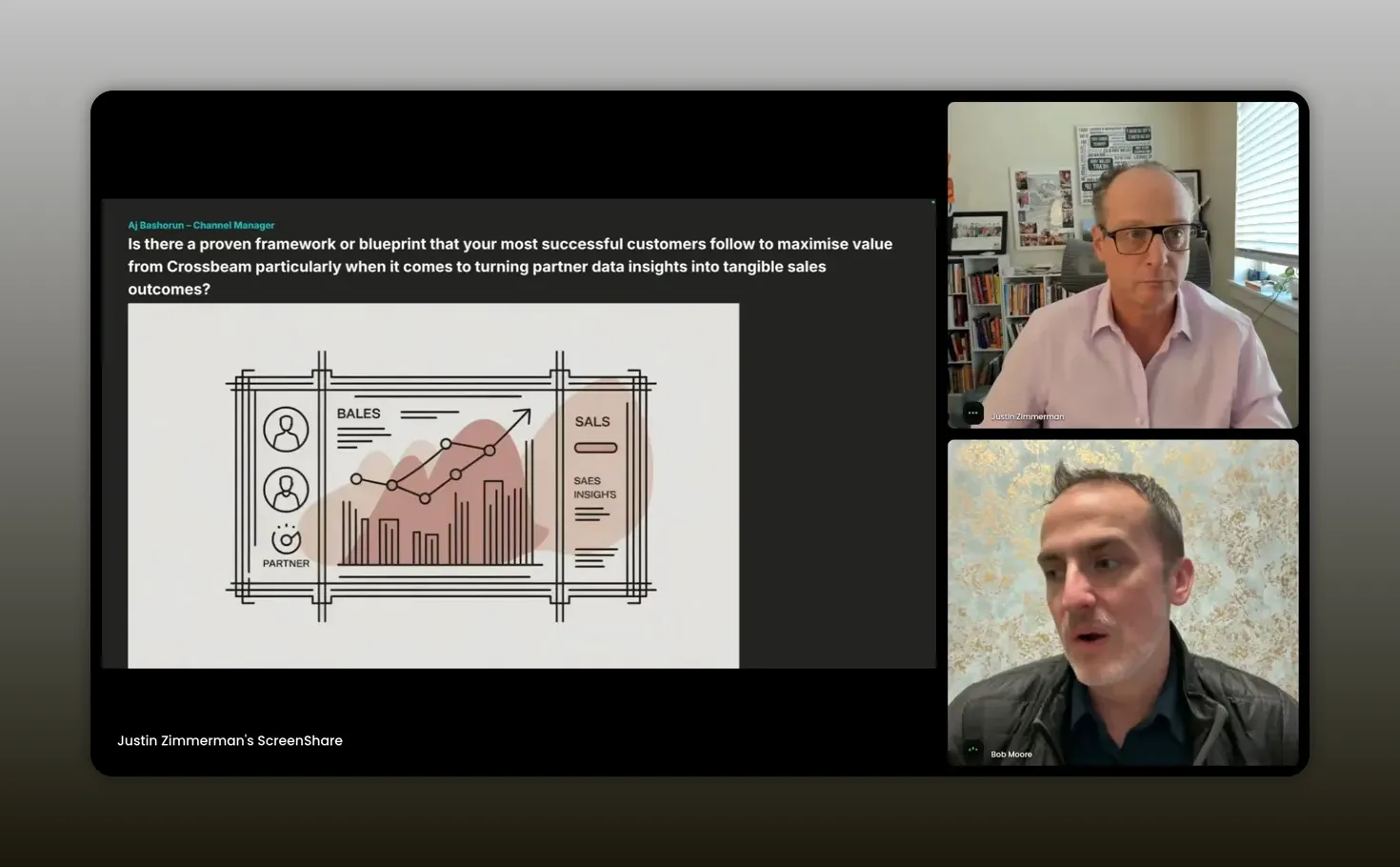
When they’re already a customer of XYZ partner, they’re twice as likely to close. – Bob Moore
Combine second-party data with lightweight AI to make the signals actionable. Examples:
- Signal scoring models that blend partner events, web behavior, and firmographics to produce an outreach score for SDRs.
- Automated email templates generated by LLMs that incorporate partner-specific facts and competitive context — with a human-in-the-loop approval step.
- Daily or weekly dashboards that surface newly active partner accounts for Account Executives and Partner Managers.
Service partners and channel strategy
Not every partnership looks the same. Bob distinguishes between tech-to-tech ecosystems (ISV-to-ISV) and vendor-to-service ecosystems (vendor → service partners). The latter has very different dynamics: hub-and-spoke networks, directionality of value, and real channel conflict.
Core differences to internalize:
- ISV networks tend to be highly connected; co-selling and mutual uplift are natural.
- Channel networks are typically hub-and-spoke; value flows from the vendor out to the customer through the service partner.
- Service partners can be competitive with each other, creating incentives to gate information and avoid oversharing.
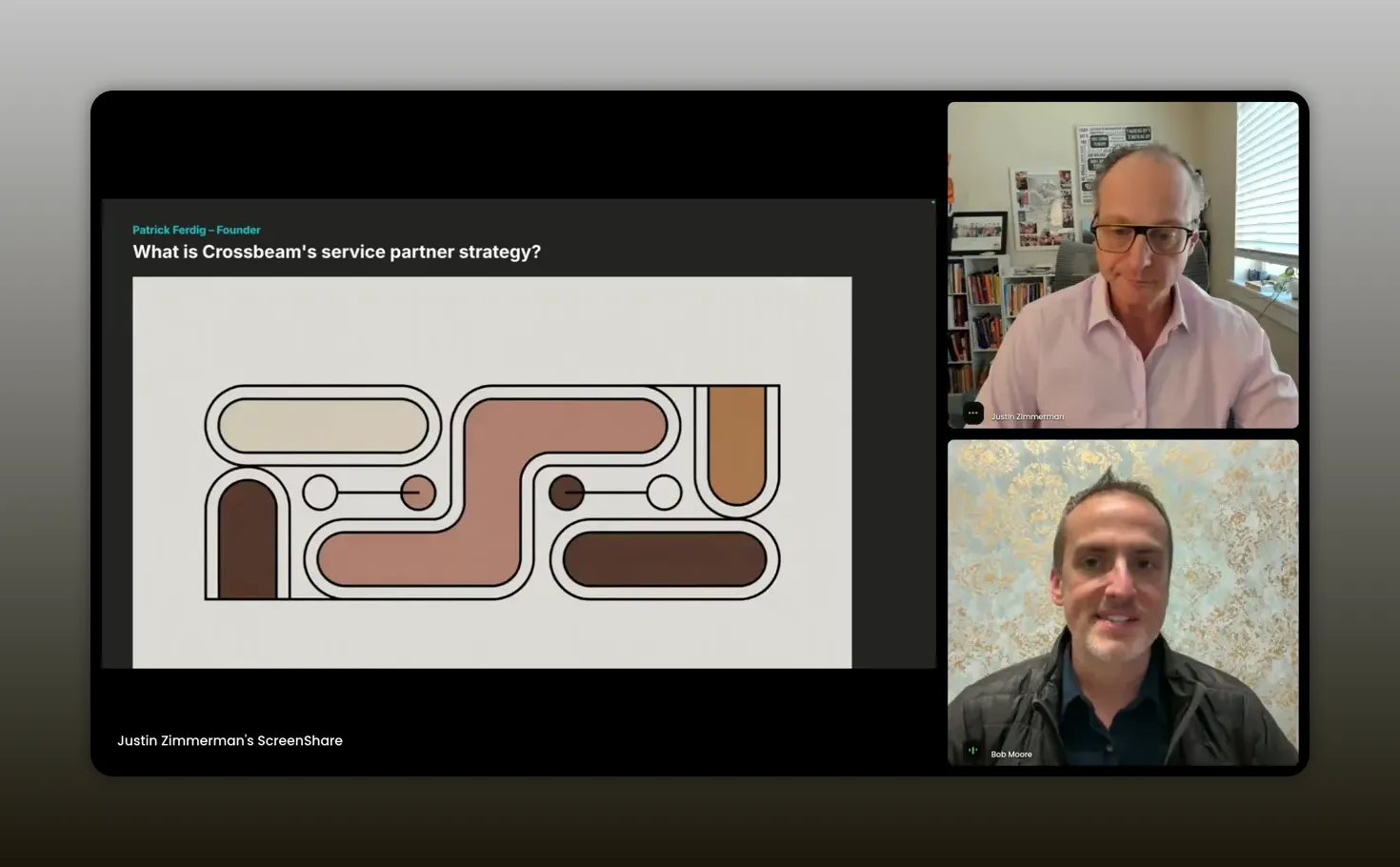
Channel conflict is very real and very terrifying in the realm of kind of the channel. – Bob Moore
Crossbeam-style account mapping solves two critical channel problems:
- It reduces accidental channel conflict by providing selective visibility. A vendor can ask: “Are you engaged with Company X?” and only receive a binary or scoped response instead of full data leakage.
- It helps vendors decide which service partner to attach to a deal using data-driven signals rather than gut. Which partner has historical success in this account type? Who has existing relationships with the buying committee?
For vendors, this means you can invest more intelligently in partner enablement: training, registrations, and event invitations can be prioritized based on data that shows where each partner delivers the most revenue lift.
Playbook: tactical steps to get started
Below is a step-by-step playbook that synthesizes the tactics discussed into a reproducible sequence for teams to follow.
- Define the jobs to be automated — map the processes that are repetitive, measurable, and limited-scope (email drafting, enrichment, low-risk customer support answers). These are prime targets for LLM-backed agents with human oversight.
- Design governance and data sharing rules — decide what gets shared with which partners, and under what conditions. Include retention windows, consent requirements, and escalation paths in case of disputes.
- Stand up partner account mapping — connect CRM systems with secure rules so partners only see the matched accounts and only the fields you allow. Start with a small partner set and grow the network.
- Create an Ecosystem Qualified Lead (EQL) workflow — define what partner activity converts a prospect into an EQL and route it to SDRs with enriched context and recommended outreach steps.
- Integrate lightweight AI for actionability — use models to score signals, draft outreach, and summarize partner activity. Keep humans in review loops until reliability is proven.
- Monitor channel health — track registrations, disputed leads, and partner satisfaction to prevent and resolve channel conflict before it escalates.
- Iterate and scale — measure lift, optimize scoring models, and expand the partner network. Use early wins to justify additional automation and partner enablement investments.
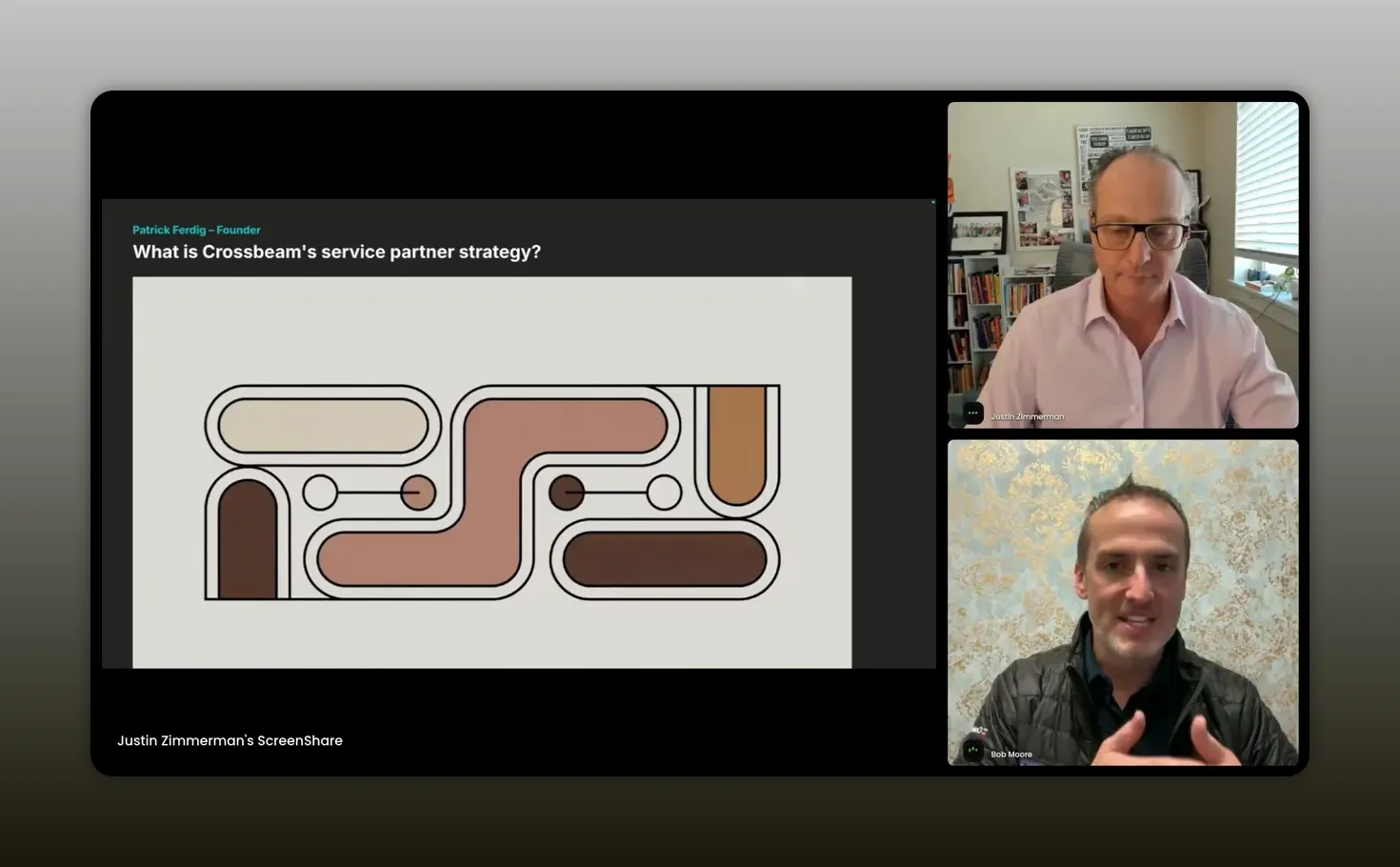
A good vision means you have strong first principles. The products can evolve. The team can change. The market could hit a downtown. But if you are relentless and consistent in your pursuit of a well-formed vision, you’ll be able to weather most storms. – Bob Moore
Measuring success: KPIs that matter
To focus investments and prove impact, choose measurable KPIs tied directly to revenue and partner health. Recommended metrics include:
- EQL-to-opportunity conversion rate (compared to baseline MQL conversion)
- Time-to-contact after a partner signal is received
- Average deal size for accounts with partner engagement vs. accounts without
- Partner-influenced revenue (both sourced and assisted)
- Number of channel conflicts detected and time to resolution
- Adoption rates for partner-sourced workflows among sales and partner teams
These metrics will tell you if second-party data is producing higher quality pipeline, whether your automation is speeding deal cycles, and whether partners feel the relationship is mutual and productive.
Common pitfalls and how to avoid them
Implementing partner-driven workflows and AI-backed automation is powerful, but not without traps. Here are common mistakes and how to mitigate them:
- Over-sharing too early — give partners the minimum necessary visibility to accomplish the task. Use scoped fields and conditional sharing to reduce risk.
- Chasing agentic fantasies — don’t prioritize fully autonomous agents over smaller automations that produce near-term ROI. Follow the crawl/walk/run pattern.
- Ignoring partner incentives — remember service partners may compete with each other. Design sharing rules to protect partner relationships and avoid unexpected conflicts.
- Failing to measure — if you can’t measure impact, you can’t optimize. Instrument every workflow and track outcomes against baseline performance.
- Underinvesting in change management — even the best tools need adoption. Provide playbooks, templates, and training to make adoption easy for sales and partners.
FAQs
What is Crossbeam’s plan to invest in agentic AI and partnership capabilities?
Crossbeam is prioritizing pragmatic, transactional AI that automates well-defined jobs — the “crawl/walk” phase. Fully autonomous agentic systems are not a major investment focus today; instead, Crossbeam is building call-and-response automations and tools that speed partner-driven workflows while keeping humans in the loop.
How do the most successful customers turn partner data into sales outcomes?
Top performers treat partner-provided signals as second-party data, use Crossbeam-style account mapping to create Ecosystem Qualified Leads (EQLs), and operationalize those signals into SDR playbooks, ABM spend allocation, and AE outreach. The result is higher conversion rates and faster time-to-close for accounts with partner momentum.
How should vendors work with service partners versus ISV partners?
Vendor–service partner relationships are hub-and-spoke and often directional, so transparency needs to be selective to avoid channel conflict. Use selective APIs and scoped visibility to let vendors confirm partner relationships or let partners confirm vendor engagement without broadcasting full CRM details publicly.
What are practical ways to avoid channel conflict?
Implement selective, rule-based data sharing; make a lightweight “are you engaged?” API call part of your inbound lead routing; and maintain a single source of truth for partner assignments. These steps minimize accidental overlap and preserve partner trust.
What is second-party data and why is it valuable?
Second-party data is partner-shared CRM and opportunity information that reveals buying momentum across the ecosystem. It’s valuable because it provides context and signals that neither your first-party telemetry nor public third-party data can reliably show — making it highly predictive for pipeline and expansion opportunities.
Conclusion
We are in a moment where the combination of AI, workflow discipline, and partner data creates an outsized opportunity for revenue teams. Follow a pragmatic path: automate the repetitive, instrument the workflows, and treat partner signals as a proprietary asset. Keep humans in the loop while you validate impact, and build governance that protects partner trust. The result is a repeatable engine for pipeline and partner-driven growth — one that scales not because you chased the flashiest technology, but because you aligned process, data, and incentives.